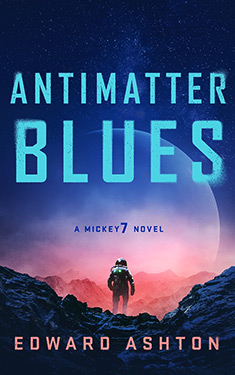Someone once said that every story starts with someone either coming to town, or leaving town. And there is no genre for which this adage holds more true than the western. It probably takes us all of a second and a half to recognize the western hero, whether he’s wearing the stereotypical white hat or not.
He (and it is almost always a man)…
- is coming from some indeterminate location, where he has often had a violent and complicated past,
- may or may not have a specific goal in mind, but if he doesn’t, he will choose a goal before the first act is done,
- almost always travels alone, isolated from any sense of community, and
- is always shown as being preternaturally competent.

probably comes closest to undermining them, but even there Tom Doniphon and Ransom Stoddard (the joint-heroes of the movie) demonstrate every one of these characteristics between the two.
This combination of traits sets up the western hero as a mythic figure: a man apart, subject solely to his own moral code. In this sense, he stands in a tradition that dates back to Greek myths, and to the chivalric romances popular in the medieval era. Yet there is a notable innovation in the western loner: where mythological or chivalric heroes would invariably succeed in their quests and reintegrate into their community/family, the western hero rarely does. When his adventures are over, he rides off into the sunset (if he’s still breathing).
This imbues the character with a tragic nobility, one which brings to mind the Japanese concept of makoto. In The Nobility of Failure: Tragic Heroes in the History of Japan, Ivan Morris translates makoto as “sincerity” with connotations of self-contained philosophical sufficiency. In other words, a hero is a hero – regardless of their moral or immoral actions – if they act relative to a consistent moral code. It is this self-same moral consistency, or their character arc to attain it, which defines the western hero.

The western hero’s choices, arc, and (at times) tragedy overshadow any other themes that may be present. The other structural and aesthetic aspects of the story – the world-building, the plot, the villain – are all subservient to an exploration and application of the hero’s sincere nature. Martin Pawley, in The Searchers, exists to frame and throw into relief the values of Ethan Edwards. The classic western villain (complete with obligatory black hat) is typically an inversion of the hero (specifically, an inversion of the hero’s moral code), and the conflict within the story arises naturally from the clash between such opposing value systems.
Consider the relationship between dual heroes Shane & Joe Starret and dual villains Stark Wilson & Luke Fletcher in Jack Schaefer’s novel Shane. They share many overt characteristics, but their philosophical and moral codes are fundamentally opposed. We can see a similar relationship in Zane Grey’s Riders of the Purple Sage
between Lassiter/Jane Withersteen and Elder Tull/Bishop Dyer, or in Unforgiven’s
William Munny and Little Bill Daggett.
The western genre unifies every aspect of the storytelling to establish and explore the hero. Because we rarely see the inner workings of the hero’s mind in western exposition, western writers instead communicate it through metaphor and action. The expansive countryside, the cold winter snows, the lonely nights are metaphors that frame and contextualize the hero, providing valuable insight into his state of mind and values. The actions the hero takes – the choices he makes, and the way he goes about achieving his goals – demonstrate the application of his values. In the best westerns, every sentence (or every camera shot) serves to further this exploration.
And while aspects of the western hero frequently appear in other genres (especially in science fiction and fantasy), the hero rarely gets such a degree of focus.
As I wrote last week, it is easy to find the western hero in speculative fiction. The “outlaw with a heart of gold” is a common trope, probably most recognizable in characters like Han Solo (Star Wars), Malcolm Reynolds (Firefly
), and Fritz Leiber’s Fafhrd and the Grey Mouser
. Equally common is the skilled and idiosyncratic loner (e.g. Rick Deckard in Blade Runner
, Robert E. Howard’s The Savage Tales of Solomon Kane
, Felix Gilman’s John Creedmore
, Stephen King’s Roland Deschain
, or Mike Resnick’s Sebastian Nightingale Cain
).
Yet while the basic characteristics of the western hero can be found in these (and many other) works, the story’s focus is typically more diffused than in the traditional western. These heroes’ moral codes and narrative arcs are broadly consistent: they either apply their moral code come hell or high water (Solomon Kane, Malcolm Reynolds) or their views evolve as the story progresses (Han Solo, Rick Deckard). But their narrative arc is rarely the only theme at play in the story.
Han Solo, the charismatic outlaw, is merely a side character in the Star Wars Saga. It is clearly the story of the Rebellion, or more specifically of Luke Skywalker’s re-establishment of balance to the galaxy. Han Solo – and his evolution – are intrinsic to this process, but they are also largely independent of it. His story, simply put, is not the main event. Were Star Wars
more traditionally in the western vein, Solo would likely have received greater focus and we would have had something more along the lines of John Sturges’ The Magnificent Seven
(which – to bring it back to makoto – is itself a remake of Akira Kurosawa’s samurai classic Seven Samurai
).
Stephen King’s Dark Tower series started off closer in nature to a traditional western, with multiple aspects of the story contributing to our understanding of the gunslinger Roland Deschain. Yet by the third book in the series, King had woven in so many thematic strands that the “western” flavor essentially disappeared.

comes the closest to maintaining a focus on its hero (Malcolm Reynolds). Yet even there, the ensemble cast and episodic nature of the show invariable dilutes the focus (certainly as compared to western television shows, which tended to feature a more constrained cast of stars).
Why, then, does so much speculative fiction shift focus away from the archetypal western hero? I think the reason tends to be their scope. Both science fiction and fantasy have a marked preference for stories where the heroes’ actions have a significance beyond the immediate. By vanquishing the villain, the hero saves the town planet universe.
Such a degree of significance is thematically opposed to the narrow, local focus of most westerns. For all of his heroism, Jack Schaefer’s Shane doesn’t save the Western Territories. He saves one town, and more specifically one family. Larry McMurty’s Captain Woodrow Call’s actions are even less significant than that: his is a personal quest, centered around his own (never explicated) drives, desires, and code.
Such personal, local scope is relatively rare in speculative fiction. At the same time, much of speculative fiction is centrally interested with the Idea, the speculative conceit at the heart of the story. Such a conceit almost always dilutes the narrative’s focus on character, which in turn diminishes the works’ resemblance to or ties to western conventions.
The recent popularity of steampunk and the weird west introduces a fascinating chapter into speculative fiction’s relationship with the western. It is – in many ways – an inversion of the genre’s traditional relationship.
Typically, as I outlined above, a speculative story might feature a classical western hero but dilute the story’s focus on that hero through the use of its speculative elements and broader scope. But in much steampunk and weird west fiction, the other conventional aspects of the western (the setting, the themes, etc.) are present, while the archetypal western hero is absent.

, Emma Bull’s Territory
, Patricia C. Wrede’s Frontier Magic trilogy
, and Felix Gilman’s The Rise of Ransom City
, we can see many hallmarks of the classic western. The environment is sparse. The rule of law is generally suspended, with the brutality that follows. Industrialization has occurred or is in the process of occurring, yet its benefits are very unevenly distributed (if at all). Social change – and the resulting tension/pressure between the majority and the Other – remains a palpable undercurrent.
Yet what is universally absent from these stories is the archetypal western hero. Neither the outlaw nor the lone cowboy makes much of an appearance (although at times, secondary characters who fit this bill might briefly appear). Instead of using the western environment to focus attention on the hero’s traits, these stories reverse the relationship. Their heroes are invariably either the ingenues or the desperate victims who the traditional western hero saves. Yet in these stories, it is these secondary characters who set out to save themselves.

) or Patricia C. Wrede’s Eff Rothmer (Thirteenth Child
). These characters start off young, unsure of themselves, and lacking in any of the skills that are defining for an archetypal western hero. Yet these stories are both bildungsroman (a structure notably absent from the western genre), and as their stories progress they mature and evolve into someone strong, capable and confident.

, the heroine Briar Wilkes must stride boldly into zombie-plagued danger to rescue her son. The significance of this departure from the traditional western structure cannot be overstated: contrast Briar Wilkes actions to save her son against Jane Withersteen’s lack of action to save Bern Vinters in Riders of the Purple Sage
. We cannot imagine Briar Wilkes “murmuring ‘Whence cometh my help!'” and then having an archetypal western (male) hero ride over the ridge. The victim, in this case, becomes the hero – a theme notably absent from the western tradition.

focuses on a character (Harry Ransom) who is three parts Ned Buntline and one part Thomas Edison. He is cowardly, venal, and utterly self-serving: fundamentally not the stuff of a typical western hero. When such characters appear in classic westerns – like the dime novelist W.W. Beauchamp in Unforgiven
– they are the comic relief, and never the hero.
Looking across the speculative fiction which incorporates western themes, I find this latter category to be the most interesting. The former – which focuses on the western hero archetype – tends to be far weaker in its use of western themes and conventions. Yes, these stories may be reminiscent of the western tradition, and they may share many similarities to the western. Yet beyond the window-dressing of plot and character devices, they draw little else from the western genre.
By contrast, the new steampunk and weird west traditions tend to be more innovative in their use of western devices. Their tendencies to recast the western hero, diminish the significance of makoto to the story, and fundamentally remold the narrative’s underlying structure, make for an interesting and refreshing evolution of the form.
Yet even with these strengths, I find that speculative fiction’s biggest difference from the western is in how the two genres utilize setting and its narrative description. Even though recent steampunk and weird west titles are subverting western devices in innovative ways, they have by and large avoided an adoption of the western’s world-building-and-imagery-as-metaphor techniques.
But we’ll get into that next week. Until then, what do you think of the western-style hero in speculative fiction?


















Good stuff. Your article makes me consider that the westerns you described are focused on characters and personal struggle rather than global struggle. Much speculative fiction seems to be lacking the personal struggle. Ultimately it is about the characters.
Something magical about the western-style hero. They stick with us when others fade away.
RKT